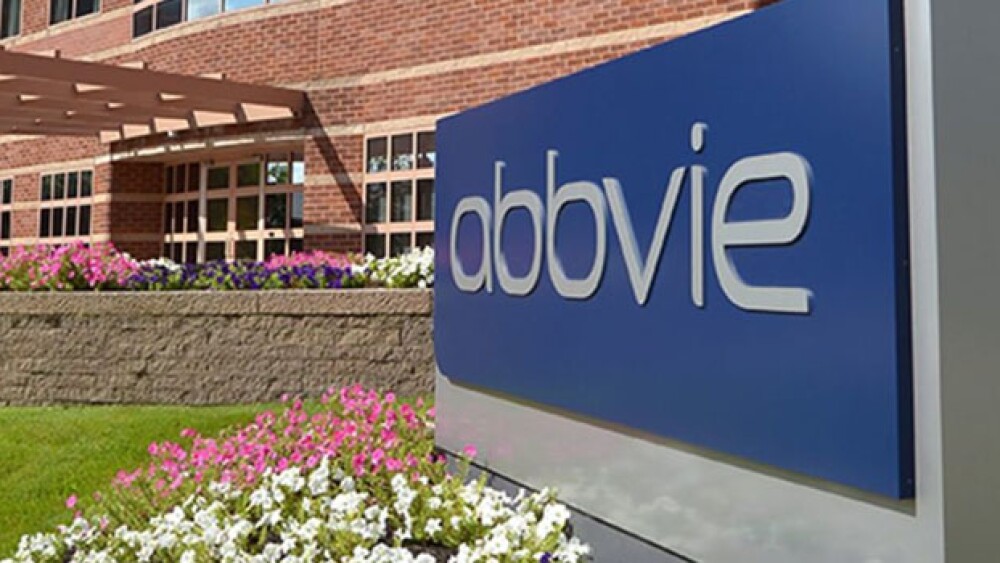Sales of Humira slid in Europe as AbbVie’s cash cow continues to face competition from biosimilars that became available at the end of last year.
Despite concerns about potential competition from recently approved and available European biosimilars to AbbVie’s cash cow Humira, the Illinois-based company was able to stave off some of the losses analysts expected.
This morning, AbbVie released its quarterly report that showed global net revenues for Humira were $4.8 billion, a decrease of 6.1%. Internationally, net revenues for Humira were $1.077 billion, a decrease of 35.2%, the company said. That drop was largely due to that increase in competition.
Last year, Humira generated $20 billion for AbbVie, the majority of the company’s annual revenue. In 2018, Humira was the top-selling prescription in global drug sales. But, that market share is being chipped away by the recent availability of biosimilars in Europe. In late 2018, Humira began to face biosimilar competition in Europe per deals AbbVie struck to protect its cash-cow. In Europe, Humira is now being challenged by biosimilars developed by Amgen, Novartis, Samsung Bioepis and Mylan.
In the United States, the top drug market in the world, sales of Humira increased 7.7% to $3.793 billion during the quarter, the company said. Biosimilar competition for Humira is also coming to the United States, but not until 2023. This week, the U.S. Food and Drug Administration approved Samsung Bioepis’ Hadlima (adalimumab-bwwd) for multiple indications, including rheumatoid arthritis.
Despite the losses in Humira revenue, AbbVie raised its earnings forecast for the year, driven in part by the strong Humira sales in the U.S., recent drug approvals, and of course, the company’s announced $63 billion acquisition of Ireland-based Allergan.
AbbVie Chief Executive Officer Richard Gonzales said the company continues to see strong momentum in its business during the quarter. He pointed to the acquisition of Allergan as a “transformative transaction that will provide scale and diversity to our business and position AbbVie for top-tier performance over the long term.” Last month, when AbbVie announced its acquisition plans, Gonzales said combining the two companies will allow AbbVie to diversify is business, while “sustaining our focus” on scientific research and the company’s pipeline, which includes the top-selling drug, Humira.
That reasoning was echoed by some analysts following the announcement. AbbVie had been expected to go after smaller “bolt-on” deals, but instead bagged a whale that will transform AbbVie into a more diversified company. Allergan has a strong blockbuster in Botox, supported by additional drugs for migraine, as well as neurology drugs and others.
While AbbVie snapped up a whale-like Allergan, it also continued to flex its M&A muscle this past quarter with the acquisition of Seattle-based Mavupharma. That deal allows the company to dive into the STING (STimulator of INterferon Genes) pathway, which plays an important role in the innate immune system, which is the body’s first line of defense against various pathogens, including the development of cancerous tumors.
Other highlights for AbbVie this quarter include worldwide net revenues were $8.255 billion. Cancer drug Imbruvica generated revenue of $1.099 billion, an increase of 29.3%. Global net revenues for Venclexta, a multiple myeloma drug approved last year, were $169 million. Venclexta hit a snag earlier this year when the U.S. Food and Drug Administration placed a partial clinical hold on all multiple myeloma trials involving Venclexta. The hold was lifted in June.
Recently approved Skyrizi, (risankizumab-rzaa) for severe plaque psoriasis in adults, was approved by the FDA in April and hit the streets in May. Skyrizi is seen as a potential drug to fill some of the financial gaps as Humira slides in sales. During its first quarter on the market, Skyrizi generated about $48 million.





